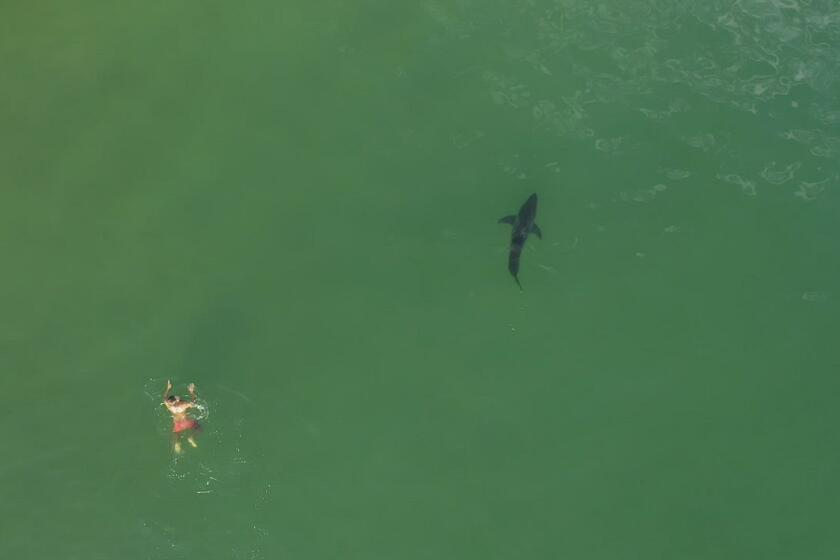‘We’ve lost Tom’: Fatal shark attack in Morro Bay devastates family and alarms surfers
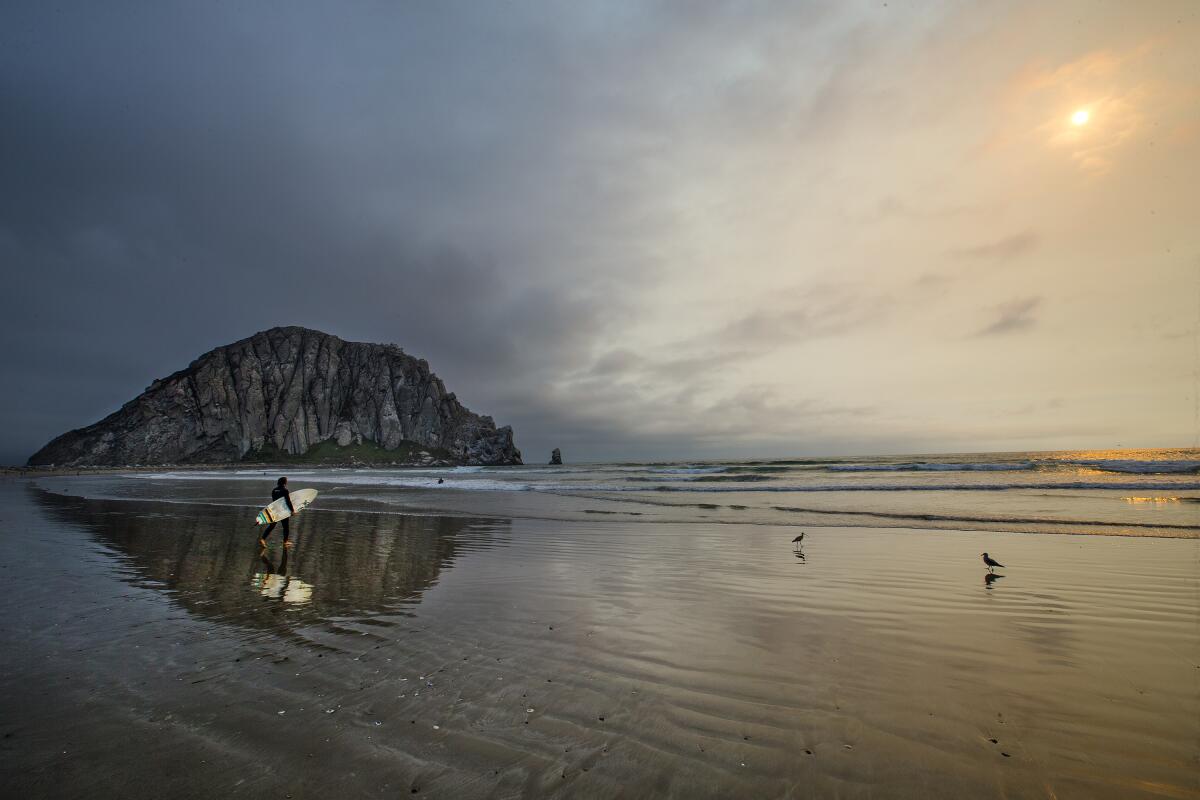
- Share via
Grant Butterfield was watching the movie “Elf” at a dinner party on Christmas Eve when his brother’s name flashed across his cellphone.
Butterfield figured he was calling to wish him a happy holiday and cheerfully answered.
“We’ve lost Tom,” his brother said.
His brother’s son, Tomas, was only 42. Butterfield wondered what could have possibly happened. A heart attack? A car crash?
Tomas Butterfield, it would turn out, died in the place he loved the most: the sea. He was riding a body board in Morro Bay that morning when a great white shark killed him in what is believed to be the first fatal shark attack in San Luis Obispo County in 18 years.
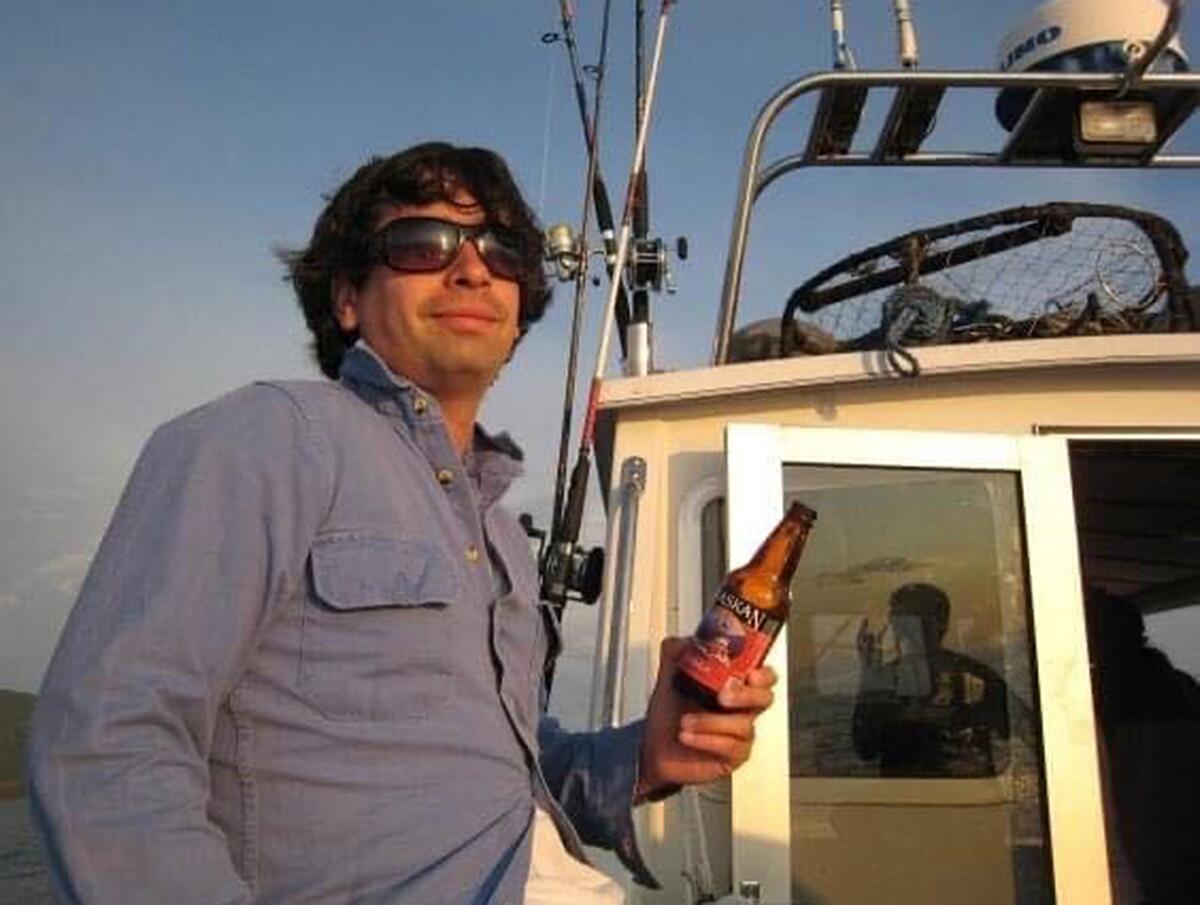
The victim of the attack near Morro Rock was publicly identified by his uncle last week.
California State Parks confirmed his identity Thursday. Butterfield, of Sacramento, was about 100 yards off the shore of Morro Strand State Beach when he was killed Dec. 24, the agency said in a statement. The death remains under investigation.
“It’s a terrible loss, at 42, with him getting his stuff together and starting to make something of himself,” said Grant Butterfield, 74. The family “is going to do OK ... but even at that, it’s a tough time holding it together.”
Tomas was visiting his mother in Morro Bay for the holiday and went to the beach alone on Christmas Eve morning, his uncle said.
About 10:40 a.m., another surfer spotted a body board “kind of bobbing in the water” near a surfing spot nicknamed The Pit and paddled toward it, said Morro Bay Harbor Director Eric Endersby.
The woman saw a leash connected to the board. She “tugged on it and felt weight” and realized it was connected to a body underwater, Endersby said. She grabbed Butterfield by his swim fins, pulled him through about chest-deep water and got him to the beach, he said.
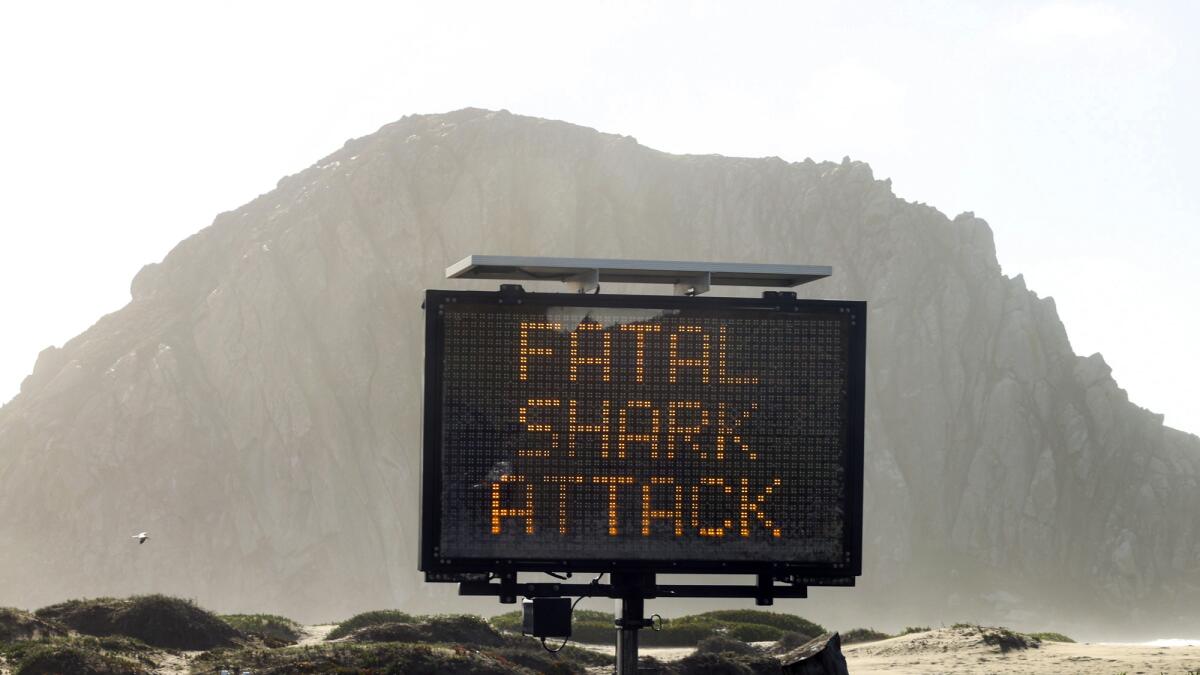
There were about 25 to 30 people in the vicinity, Endersby said, but it remains unclear whether anyone witnessed the attack.
By late morning, Butterfield’s mother and older brother — who had just arrived for the holiday from out of town — were calling him, getting no answer.
They went to the beach about noon, Grant Butterfield said. They saw emergency vehicles by the water and “a huge gaggle of first responders.”
“I think they knew,” he said.
Authorities closed the waters near Morro Strand for 24 hours. Signs stood in place through this weekend, flashing warnings: FATAL SHARK ATTACK and ENTER THE WATER AT YOUR OWN RISK.
The great white shark population off the Central California coast has grown in recent years, but violent encounters with humans — especially fatal attacks — are extremely rare, said Christopher Lowe, a professor of marine biology and director of the Shark Lab at Cal State Long Beach.
“You have a better chance of winning the lottery,” he said.
Great whites tend to be thought of as dangerous to humans, given the national headlines that attacks garner. But — as the recent advent of drone photography and advanced tracking technology has shown — they swim right off the beaches, near people, “almost on a daily basis” without incident, Lowe said.
This Malibu photographer captures images of great white sharks along the Southern California coast, many just feet from unknowing swimmers and surfers.
The population has been growing since the state protected great whites in 1994 and banned the use of gill nets in near-shore waters, Lowe said.
Great whites, which can get up to 20 feet long and weigh about 3,000 pounds, have been spotted as far north as the Gulf of Alaska and as far south as near the equator, he said. Typically they are found in temperate or subtropical waters.
The Central California coast — where the animals can easily find the elephant seals and sea lions that they hunt — has become “primo habitat” for them year-round, Lowe said.
Sharks don’t often bite humans, he said, but when they do, it’s usually because they mistake them for their typical prey or because they’re feeling threatened.
As the climate changes and the ocean gets warmer, the sharks are expanding their territory, showing up farther north in greater numbers, Lowe said.
“I really don’t think people need to be scared, but they do need to exercise good judgment,” he said.
“Sharks are coming back. There are more of them out there. The ocean is their home, and we’re guests in their home, but occasionally accidents do happen.”
There were 199 documented shark encounters with humans — in which a shark approached and touched a person or their surfboard, kayak or paddleboard — from the 1950s through August 2021, according to California Department of Fish and Wildlife data. Of those encounters, 14 were fatal.
Two days before Tomas Butterfield’s death, two surfers were chased by a shark off North Salmon Creek Beach, just north of Bodega Bay in Sonoma County.
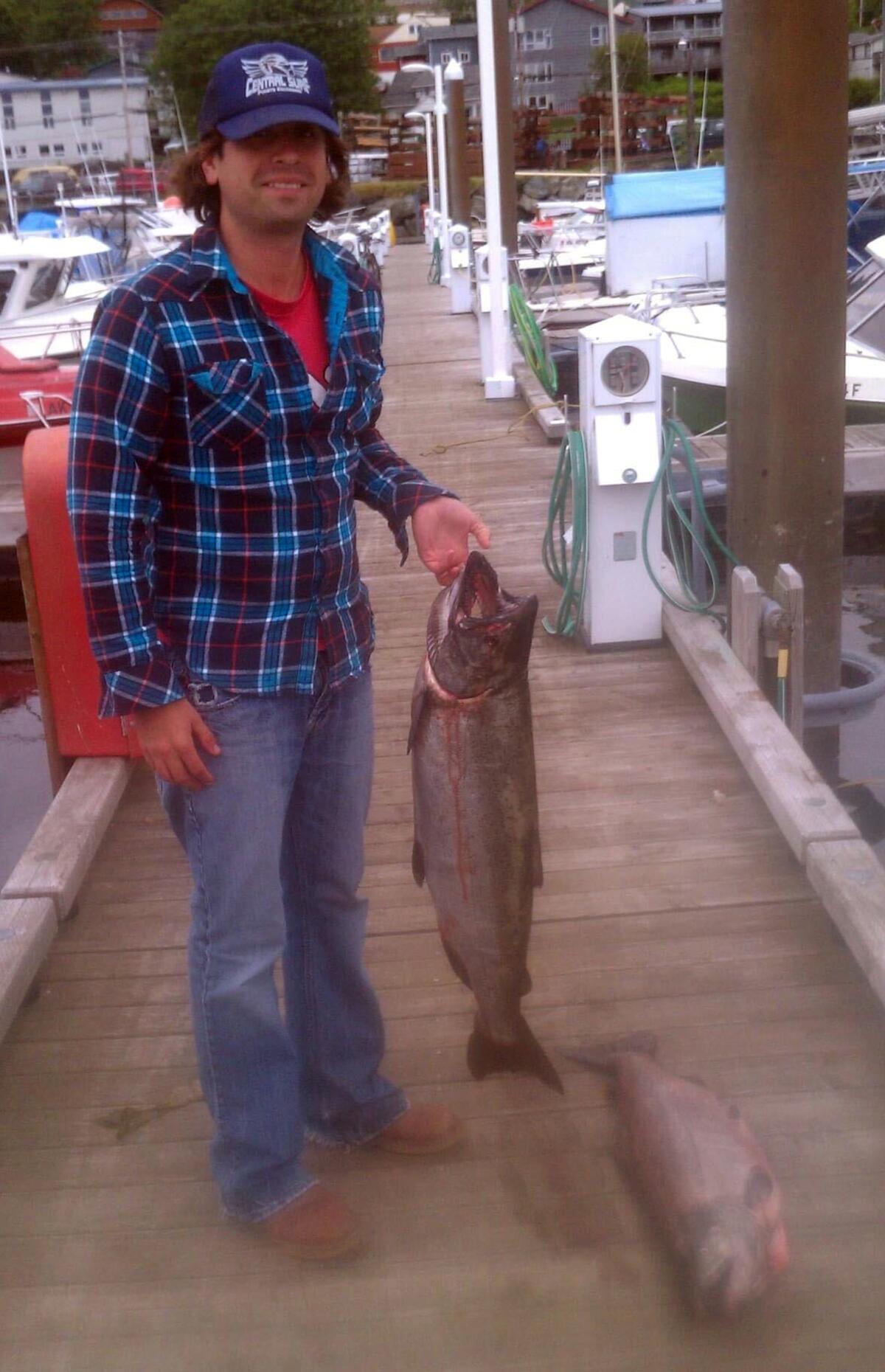
“Holy crap, we were terrified because it was not backing off,” Timothy Reck of Sebastopol told the Santa Rosa Press Democrat. Reck said he and another surfer escaped after the shark bit the leash of one of their surfboards.
In October, another surfer was critically injured off North Salmon Creek Beach when a great white shark clamped onto his leg.
Endersby, the Morro Bay harbor director, said he believes the last fatal shark attack in San Luis Obispo County was in August 2003, when a 50-year-old woman was killed in nearby Avila Beach. The woman was believed to have been swimming in a dark wetsuit and possibly mistaken for one of the seals or sea lions — food sources for a variety of sharks — seen near her.
Endersby said he has seen sharks in the water while surfing twice in recent years. The 29-year harbor employee said he is often asked whether the water is safe.
“My answer is always, ‘It’s never safe or unsafe; it is what it is.’ It’s just the wilderness, and you have to be aware there are dangers. It’s just like the mountains — there are bears and mountain lions. There are snakes in the foothills.”
Butterfield’s death sent a chill through the Morro Bay surfing community.
Mike Jones, owner of the Azhiaziam surf shop, said it has been the main topic of conversation in his store. For days after the attack, the waters were unusually devoid of surfers.
“There have been a lot of surfers coming in the shop saying they’re not ready,” Jones said.
Jones, 48, grew up in the area and usually goes surfing two to three times a week. But he had not been back in the ocean for a week after the attack.
Since it has been raining in recent days, the water is murky, making it harder for sharks to distinguish between humans and prey, Jones said. He refused to rent surfboards to customers for several days.
“I tell them, with the shark attack, we’re gonna let the water clear a few days,” he said.
Grant Butterfield said his nephew always loved the ocean.
Tomas Butterfield was born in Pittsburg, Calif. After his parents divorced, he and his older brother, Ben, moved with their mother to Ketchikan, Alaska, where Tomas attended high school and was drawn to the water, his uncle said.
At the time of his death, Tomas was living in Sacramento, working for his father at a medical equipment repair company, Grant said. Tomas and his brother were extremely close, and the two lived for a short time in their 20s in Puerto Rico, fishing and surfing constantly.
“Tomas had a very wry sense of humor,” Grant said. “If you could get a belly laugh out of him, that was pretty remarkable. If he thought he was being clever and cute, you’d get this little grin on his face, his little side smile.”
Tomas’ mother, Grant said, “is deeply invested in the Catholic Church there in Morro Bay” and has a good support system helping her through the tragedy. His father and brother are “pretty shattered.”
Grant said he would forever be grateful to the woman who pulled his nephew’s body out of the water.
“She doesn’t know it, but she’s obviously part of the family now,” he said. “The possibility that his board might have gone farther out to sea and that he would have been missing forever and we wouldn’t have known anything —”
He choked up. It was too difficult to finish the thought.
Times staff writers Gregory Yee and Andrew J. Campa contributed to this report.
More to Read
Sign up for Essential California
The most important California stories and recommendations in your inbox every morning.
You may occasionally receive promotional content from the Los Angeles Times.
